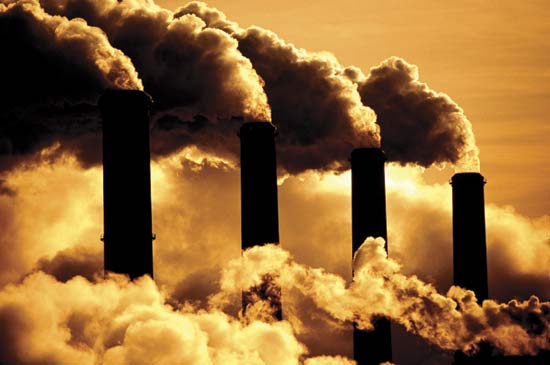Reports from the UN climate meet in Lima say India has refused to accept a time limit for capping greenhouse gas emissions. This is really unfortunate.
Environmental Minister Prakash Javadekar was right in saying that carbon dioxide (CO2) has helped to improve grain yields in most of South Asia. At the same time, Javadekar must know that greenhouse gas emissions in the long term enhance the surface temperature. And when surface temperature increases, we need more ground water to irrigate our agricultural farms to achieve high yield.
The long-term implications will be serious considering that ground water table in recent years has already depleted, especially in the central parts of India and in the Indo-Gangetic plains. Some parts of the world are also not getting much ground water. This will certainly impact future generations.
To fulfil the energy demand of people living in the Indo-Gangetic plains, the density of coal-based power plants in that region is very high compared to rest of India. The Narendra Modi government is adding more such power plants which is good for the people living in India. At the same time, the government must think seriously about the long term implications and consider to cap greenhouse gas emissions in India.
 Capping is urgent and important in view of the impact of emissions on human health and climate change, especially in northern parts of India including the Indo-Gangetic plains. The Indo-Gangetic plains is rich in natural resources compared to the rest of the country: agricultural farming is very high in the eastern parts of the plains and Punjab in the west is considered the food basket of India.
Capping is urgent and important in view of the impact of emissions on human health and climate change, especially in northern parts of India including the Indo-Gangetic plains. The Indo-Gangetic plains is rich in natural resources compared to the rest of the country: agricultural farming is very high in the eastern parts of the plains and Punjab in the west is considered the food basket of India.
Industrial emissions and mining in the eastern parts of Indo-Gangetic plains and increasing vehicles in the last one decade are responsible for atmospheric pollution during the winter season; during pre-monsoon season dust events are more prevalent. All the pollutants irrespective of seasons concentrate in the Indo-Gangetic plains due to the presence of the Himalayas in the north.
In the last one decade, the monsoon rainfall was very erratic; that has enhanced the atmospheric pollution, degrading the air quality impacting on human health acting as slow poison. There is no authentic health data available but my close interactions with the medical community in the last two decades has revealed that the number of people suffering, especially in northern India, due to cancer and respiratory problems is very high compared to the rest of India.
The emissions from power plants, industries, vehicles, dust events, burning of crop residues and bio-fuel cooking are the sources of pollution and greenhouse emissions. They are serious health hazards and have adverse climate impacts especially during winter season. A short span of mortality data from Varanasi has revealed that the number of people especially the elderly who die during winter is very high compared to other seasons.
Prime Minister Narendra Modi must consider all these facts and plan his strategy: decide if he wants to please the population at large for short term or cap the greenhouse emissions to benefit people in the long term. The government should also try to make strict laws for emission control; implement timely maintenance of filters in the chimneys to curb emissions from the power plants; and ban crop residue burning in Punjab, Haryana and Uttarakhand.
Ramesh Singh
Ramesh Singh, formerly Professor at the Indian Institute of Technology, Kanpur, is presently Professor of Earth and Environmental Sciences at Chapman University, California. The views expressed are personal.
